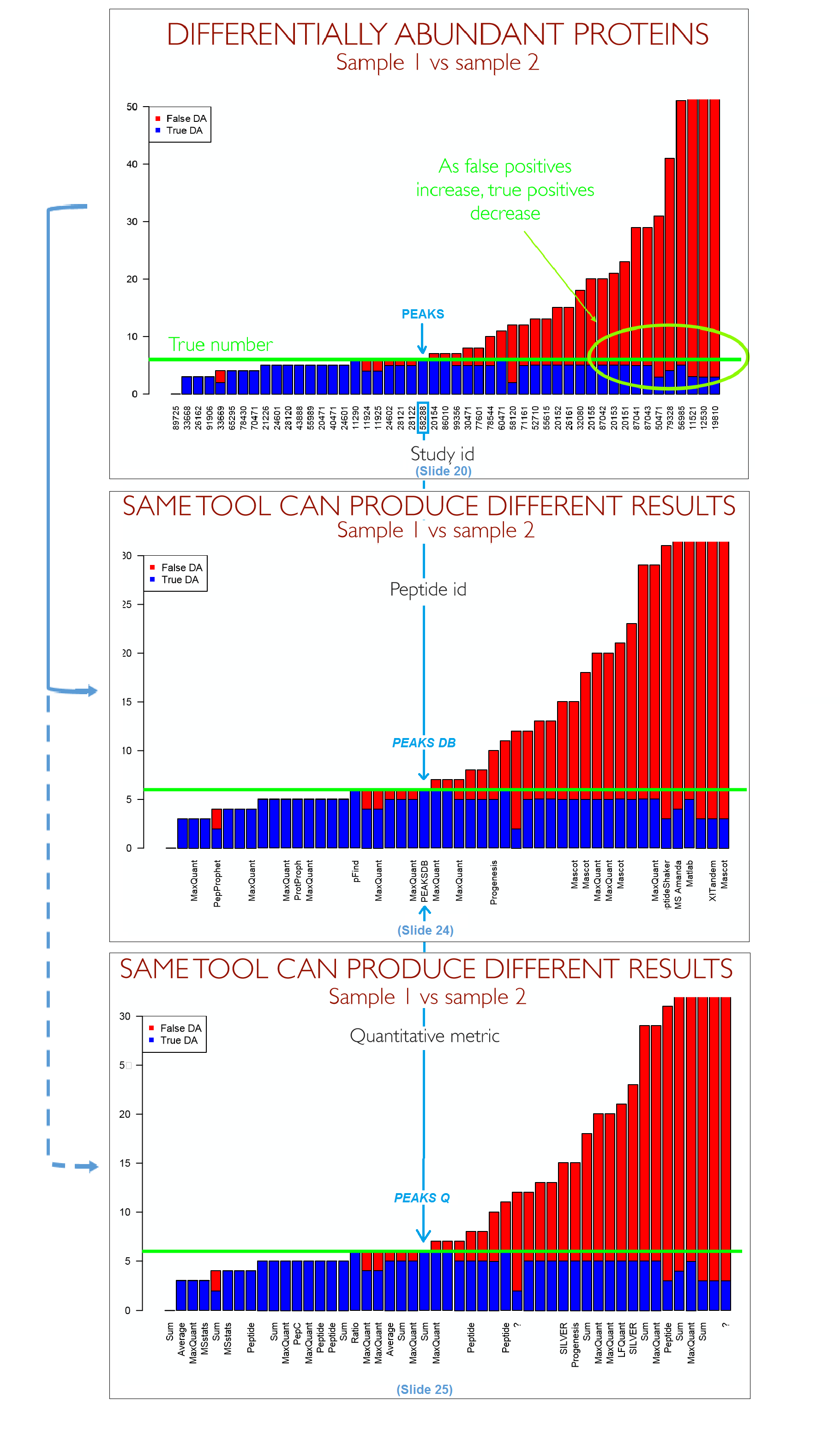iPRG Study Results
PEAKS label-free quantification successfully demonstrates its high-level of accuracy in this year’s ABRF iPRG study.
Graphs from the results were retrieved from the ABRF iPRG Preliminary Results Summary. To view the full Preliminary Results Summary, please use the link provided below.
The first graph shown is an overview of all the participating Study IDs in relation to their results as seen on slide 20 in the Preliminary Results Summary. The same graph is then presented again on slides 24 and 25 (zoomed in), to show the specific tools used for peptide ID, as well as quantification for each submission.
Of the 51 submissions, very few were able to recognize the true differentially abundant (DA) proteins, as seen in the graph. PEAKS, however, recognized all 6 true DA proteins (represented in blue), and reported 0 false DA proteins (represented in red).
 The purpose of the study was to evaluate different data analysis methods for relative protein-level quantification in label-free proteomics.
The purpose of the study was to evaluate different data analysis methods for relative protein-level quantification in label-free proteomics.
Participating researchers were required to detect and identify proteins that changed in relative abundance among four biological samples, prepared from the same S. cerevisae yeast cell lysate.
To truly focus on the statistical assessment of the varying data processing approaches, the peptide identifications and their associated integrated peak intensities were provided.

